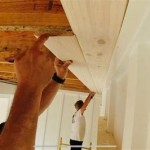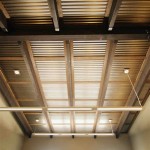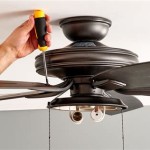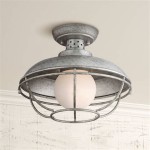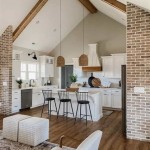Ceiling Design Material Names and Pictures
The ceiling is often an overlooked design element in a room, yet it plays a crucial role in defining the overall ambiance. Different ceiling materials offer unique aesthetic qualities, textures, and functionalities, impacting the space's visual appeal and acoustic properties. Selecting the appropriate material for your ceiling depends on factors like the room's purpose, desired aesthetic, budget, and desired level of noise reduction. This article will explore various ceiling design materials, highlighting their characteristics, advantages, and visual examples through images.
Drywall
Drywall, also known as gypsum board, is a popular and versatile ceiling material. It is relatively inexpensive, easy to install, and can be painted in various colors to match the room's decor. Drywall is a durable material that can be textured or left smooth depending on the desired aesthetic. It is available in standard 4’x8’ sheets, making installation straightforward.
Here are some advantages of using drywall for ceilings:
- Cost-effective: Drywall is generally the most affordable ceiling material option.
- Easy to install: Standard sheet sizes and readily available tools make installation relatively simple.
- Versatile: Drywall can be painted, textured, or even wallpapered to achieve different styles.
Drywall is commonly used in bedrooms, living rooms, and kitchens, offering a clean and modern aesthetic. It is often the preferred choice for homeowners seeking a budget-friendly and easy-to-maintain ceiling solution.

Wood
Wood ceilings can add warmth, elegance, and a touch of rustic charm to any room. They are available in a wide range of species, finishes, and installation methods, allowing for a high degree of customization. Wood ceilings can be installed as planks, beams, or even entire panels, offering a range of visual textures and styles.
Here are some advantages of using wood for ceilings:
- Natural Beauty: Wood offers a unique and timeless aesthetic that adds warmth and character to any space.
- Variety of Styles: Wood can be stained, painted, or left natural, allowing for different looks and finishes.
- Durability: Wood is a robust material that can withstand the test of time.
Wood ceilings are often used in living rooms, dining rooms, and bedrooms, creating a warm and inviting ambiance. They can also be incorporated into more modern spaces, offering a unique contrast to minimalist designs.

Tin
Tin ceilings, also known as stamped metal ceilings, offer a vintage industrial look that adds character and sophistication to any space. They are made from thin sheets of tin that have been pressed into intricate patterns. Tin ceilings are known for their durability, sound-absorbing qualities, and unique aesthetic appeal.
Here are some advantages of using tin for ceilings:
- Unique Style: Tin ceilings provide a distinctive vintage look that can elevate any room.
- Durability: Tin is a robust material that can withstand moisture and temperature changes.
- Sound Absorption: Tin ceilings help reduce noise levels, making them ideal for areas requiring acoustic control.
Tin ceilings are often found in kitchens, dining rooms, and bathrooms, often complementing rustic or farmhouse-style decor. Their reflective properties also help brighten dimly lit spaces.

Acoustic Tiles
Acoustic tiles are specifically designed to absorb sound and reduce echoes, making them ideal for rooms where noise control is essential. They come in a diverse range of materials, including mineral wool, fiberglass, and foam, each with its own sound absorption properties and aesthetic appeal.
Here are some advantages of using acoustic tiles for ceilings:
- Sound Absorption: Acoustic tiles effectively reduce noise levels and improve the overall acoustic environment.
- Variety of Materials and Styles: Acoustic tiles are available in various colors, textures, and finishes to complement different design styles.
- Ease of Installation: Acoustic tiles are typically easy to install using adhesive or clips.
Acoustic tiles are often used in offices, classrooms, recording studios, and other spaces where noise reduction is crucial. They can also be used in homes, particularly in areas like home theaters or music rooms.

Suspended Ceilings
Suspended ceilings consist of a grid system made of metal or plastic panels, creating a drop-down ceiling beneath the main structural ceiling. This design offers flexibility in terms of access to utilities and ventilation systems while creating a visually defined space. Suspended ceilings can also incorporate various materials and lighting fixtures, allowing for customization.
Here are some advantages of using suspended ceilings:
- Accessibility: Suspended ceilings provide easy access to electrical wiring, plumbing, and other utilities.
- Flexibility: The grid system allows for the installation of various ceiling materials, lighting fixtures, and other elements.
- Aesthetics: Suspended ceilings offer a clean and modern aesthetic that can enhance the overall room design.
Suspended ceilings are commonly used in commercial buildings, offices, hospitals, and retail spaces. They offer a practical and stylish solution for creating a well-defined workspace or retail environment.

Selecting the right ceiling material is an important design decision that can significantly impact the look and feel of a space. By considering the specific needs and aesthetic preferences of the room, homeowners and designers can choose the perfect material to create a functional and visually appealing ceiling.

Types Of False Ceiling Gypsum Glass Wooden Fiber Materials Nerolac

False Ceiling Contractors From 48 Sq Ft Shaj Interior

Plastic Ceiling Design Matt Pvc Baffle 20cm 595m Panel Made In China Com

8 Types Of False Ceilings Commonly Used For Home Ultratech Cement

Metal Profiles For Steel S

Gyproc Gypsum Ceiling Channels 0 50 Mm At 65 Piece In Vadodara Id 2851878830891

Types Of False Ceiling Gypsum Glass Wooden Fiber Materials Nerolac

8 Types Of False Ceilings Commonly Used For Home Ultratech Cement

Plastic Ceiling Design Matt Pvc Baffle 20cm 595m Panel Made In China Com

8 Types Of False Ceilings Commonly Used For Home Ultratech Cement
Related Posts



